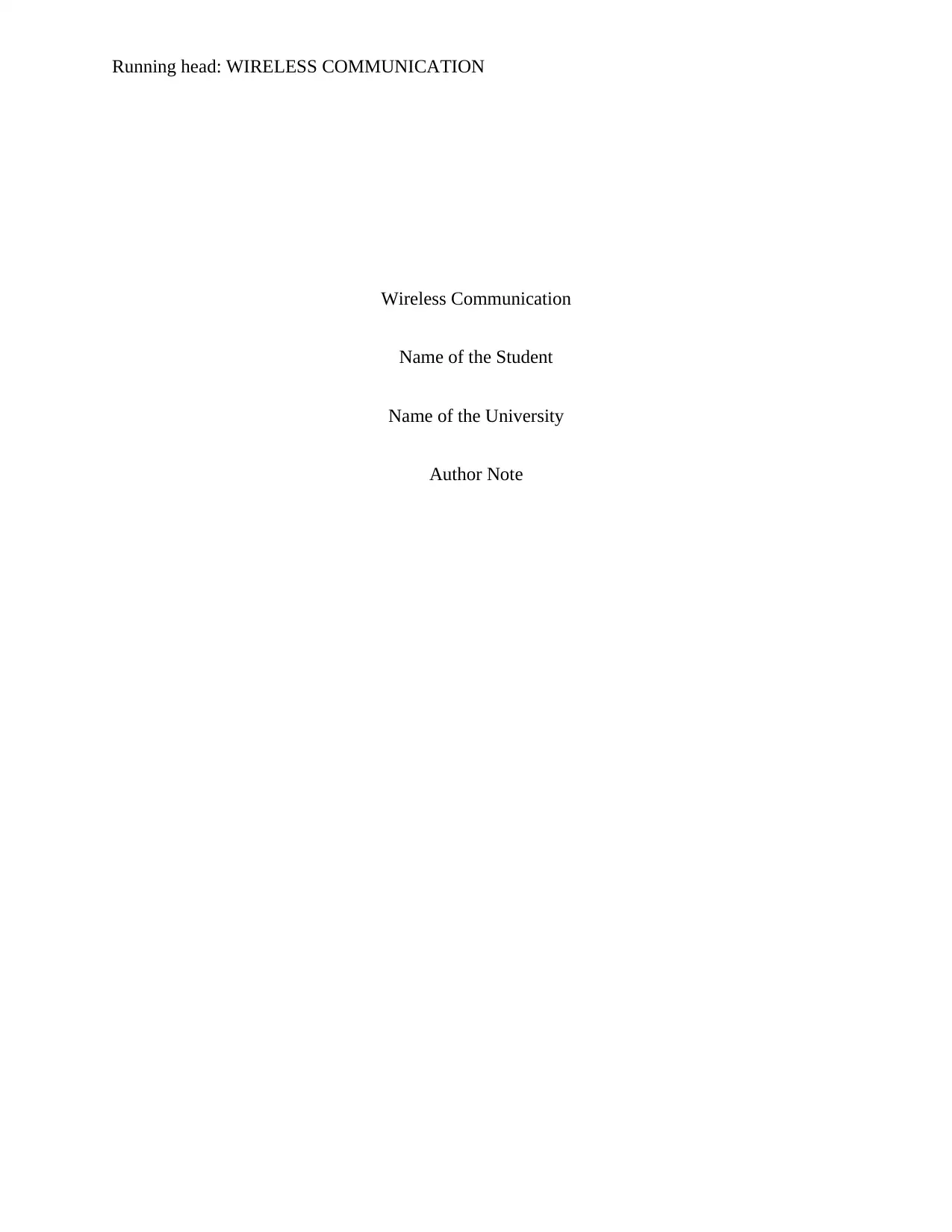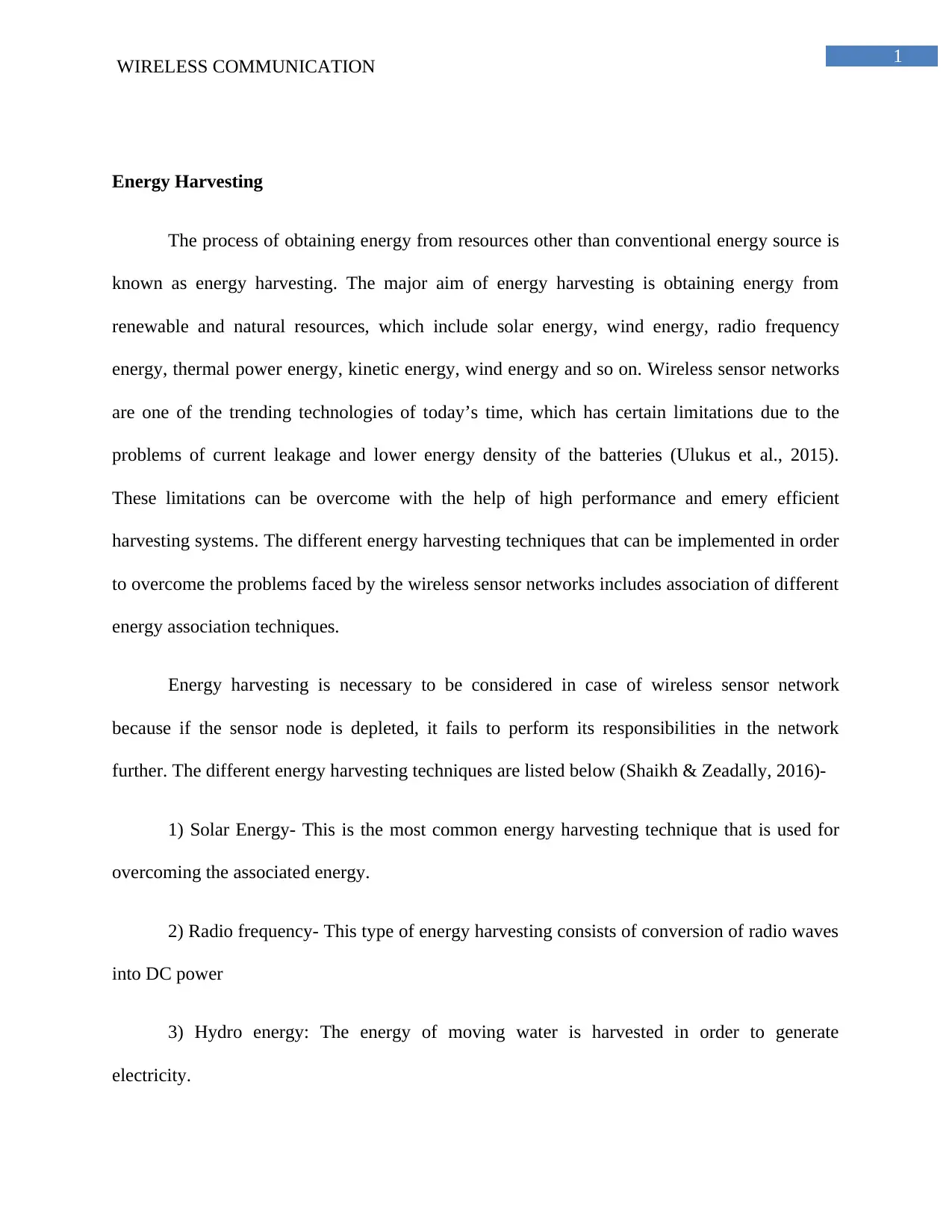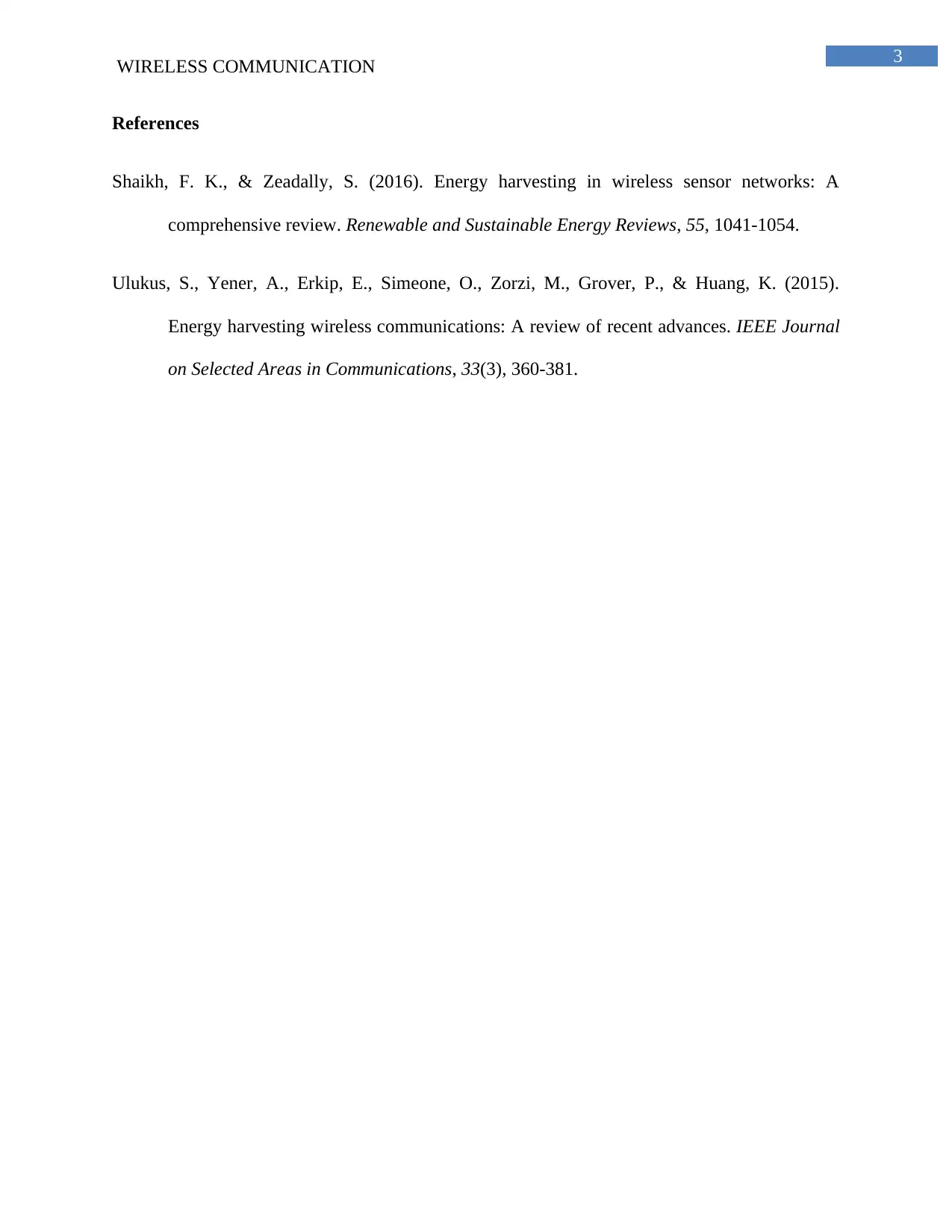Wireless Communication: Energy Harvesting and Applications
VerifiedAdded on 2020/04/07
|4
|404
|79
Report
AI Summary
This report delves into the realm of energy harvesting within wireless communication systems. It explores various techniques, including solar energy, radio frequency (RF) energy harvesting, hydro energy, and thermal energy conversion, highlighting their roles in overcoming energy limitations. The report emphasizes the importance of energy harvesting in wireless sensor networks (WSNs) to ensure continuous operation and prevent node failure. It provides an overview of how these techniques contribute to improved energy efficiency and sustainable power solutions for wireless communication applications, referencing relevant research and providing insights into the challenges and opportunities associated with each method. The report also includes references to the sources used to create the report.
1 out of 4










![[object Object]](/_next/static/media/star-bottom.7253800d.svg)